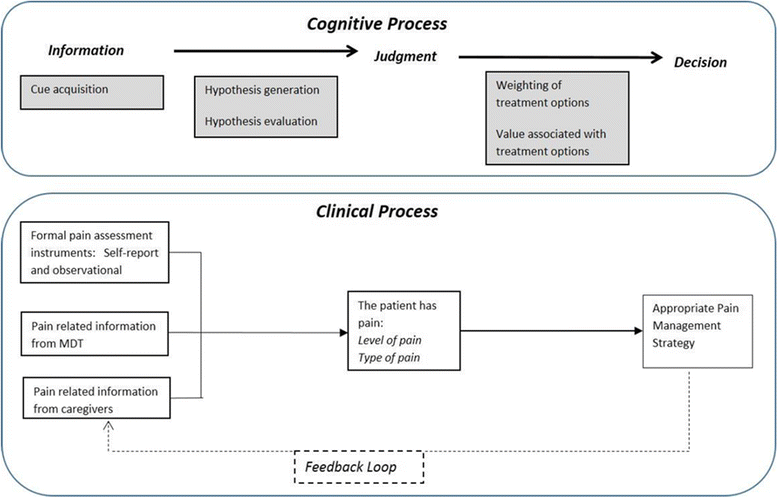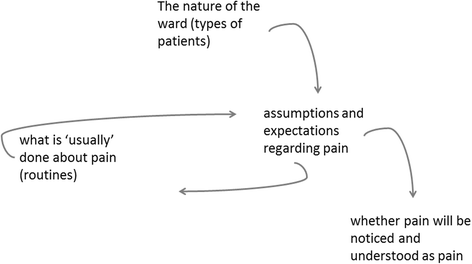The assessment and management of pain in patients with dementia in hospital settings: a multi-case exploratory study from a decision making perspective
- PMID: 27553364
- PMCID: PMC4995653
- DOI: 10.1186/s12913-016-1690-1
The assessment and management of pain in patients with dementia in hospital settings: a multi-case exploratory study from a decision making perspective
Abstract
Background: Pain is often poorly managed in people who have a dementia. Little is known about how this patient population is managed in hospital, with research to date focused mainly on care homes. This study aimed to investigate how pain is recognised, assessed and managed in patients with dementia in a range of acute hospital wards, to inform the development of a decision support tool to improve pain management for this group.
Methods: A qualitative, multi-site exploratory case study. Data were collected in four hospitals in England and Scotland. Methods included non-participant observations, audits of patient records, semi-structured interviews with staff and carers, and analysis of hospital ward documents. Thematic analysis was performed through the lens of decision making theory.
Results: Staff generally relied on patients' self-report of pain. For patients with dementia, however, communication difficulties experienced because of their condition, the organisational context, and time frames of staff interactions, hindered patients' ability to provide staff with information about their pain experience. This potentially undermined the trials of medications used to provide pain relief to each patient and assessments of their responses to these treatments. Furthermore, given the multidisciplinary environment, a patient's communication about their pain involved several members of staff, each having to make sense of the patient's pain as in an 'overall picture'. Information about patients' pain, elicited in different ways, at different times and by different health care staff, was fragmented in paper-based documentation. Re-assembling the pieces to form a 'patient specific picture of the pain' required collective staff memory, 'mental computation' and time.
Conclusions: There is a need for an efficient method of eliciting and centralizing all pain-related information for patients with dementia, which is distributed in time and between personnel. Such a method should give an overall picture of a patient's pain which is rapidly accessible to all involved in their care. This would provide a much-needed basis for making decisions to support the effective management of the pain of older people with dementia in hospital.
Keywords: Aged; Decision making; Dementia; Hospitalization; Pain assessment; Pain management; Qualitative research.
Figures



References
Publication types
MeSH terms
Grants and funding
LinkOut - more resources
Full Text Sources
Other Literature Sources
Medical

